REMODELING IN THE VICTORIAN AGE (1894)
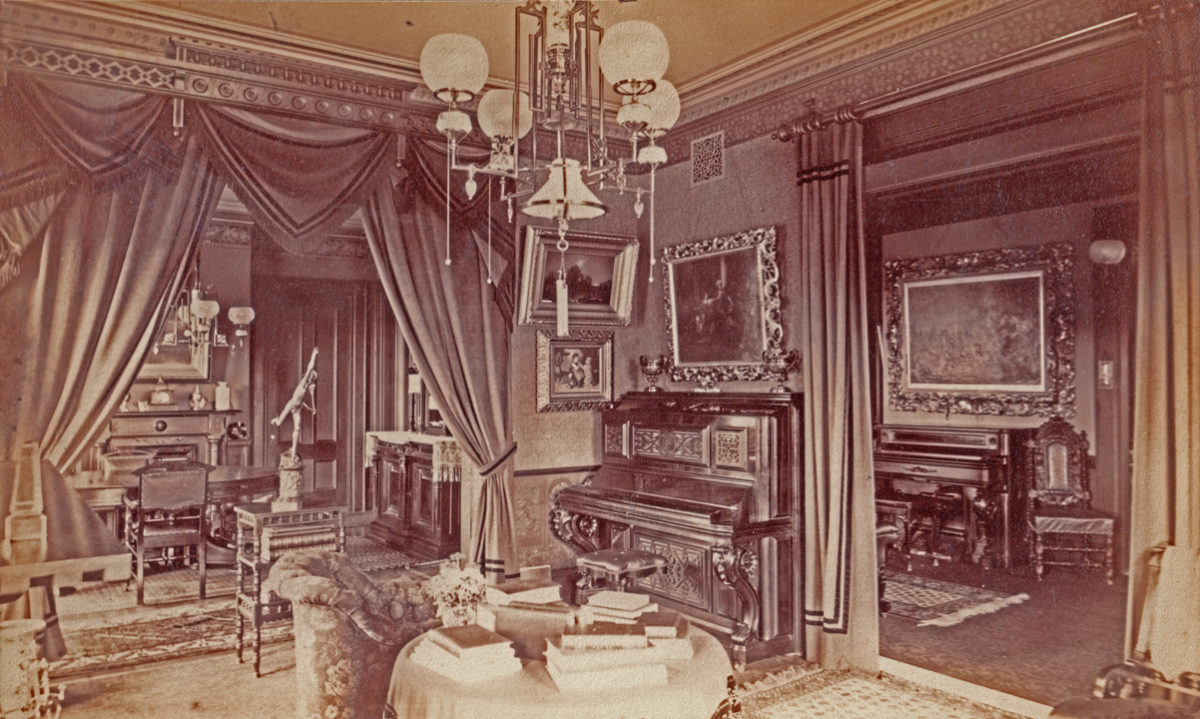
Brownstone Detectives investigates the history of our clients’ homes.
The story you are about to read was composed from research conducted in the course of one of those investigations.
Do you know the history of YOUR house?
********************************************************************************************************************************
In the early 1890s, Good Housekeeping magazine published a series of articles by Mrs. Oliver Bell Bunce – the wife of the author – on the proper maintaining of a household. The following piece expounded upon the decoration of homes in the late 19th century – what was “in” and what was not. It may not serve as a guide to how every home was kept, but it does give a peek into how some interior decorators were thinking on the subject. Also, as the Bunces lived in New York City, the article can be seen through the lens, more specifically, of laying out the preferred interior use and decoration of a brownstone or townhouse.
WHAT TO DO WITH MY LADY’S HOUSE
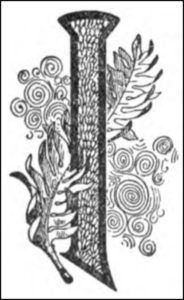 n this age, when home decoration has been reduced to a science, when artistic treatment is looked upon with so much favor, when every part of a room which is unsightly can. if the good caretaker knows the value of art and its properties, be made attractive, a homely object will, under her hands, become a thing of beauty, and many an eyesore develop into an enduring charm. For the treatment of doors, there are various ways and methods by which they can be adapted to circumstances. We will suppose that space is limited in an apartment, the furniture heavy and bulky. By closing up one door, if there are more than one, a piece of furniture can be placed against it, and a background formed for other objects, which must be selected in accordance with the rules of decoration.
n this age, when home decoration has been reduced to a science, when artistic treatment is looked upon with so much favor, when every part of a room which is unsightly can. if the good caretaker knows the value of art and its properties, be made attractive, a homely object will, under her hands, become a thing of beauty, and many an eyesore develop into an enduring charm. For the treatment of doors, there are various ways and methods by which they can be adapted to circumstances. We will suppose that space is limited in an apartment, the furniture heavy and bulky. By closing up one door, if there are more than one, a piece of furniture can be placed against it, and a background formed for other objects, which must be selected in accordance with the rules of decoration.
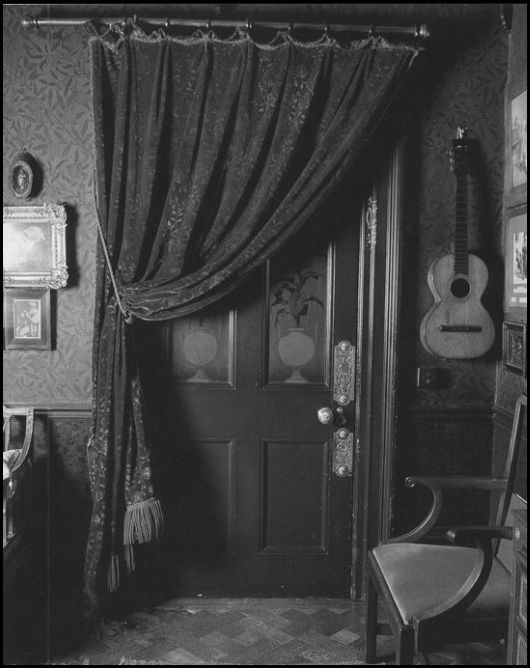
To make a fine example, we will take a low book case, which will hide at least a part of the door. If there is a transom, turn it down, so as to form a shelf. Select a thin piece of wood or pasteboard, so as to make a level for the glass. Over it drape a soft silk scarf or a bit of oriental stuff of good color. Then ornament the shelf with some delf, either a jug or plate, a Japanese bowl or even a vase of symmetrical proportions. For the door proper a curtain of silk can be adjusted, hung either by a gilt rod or thrown carelessly over the top. On the left-hand of the door, place a picture, choosing some subject full of life or color, and when completed we will have as fine a bit of door furnishing as one would wish to see.
If there is a closet in the best room, which to every woman is a positive objection, and needs concealment, a curtain and pole will obviate this difficulty. It not only serves to hide the ugly lines, but provides for a delightful scheme in decoration. Colors that are suitable and harmonious should be selected, for on that depends the effect of the ensemble. If in a bedchamber there are two doors, the one which is not needed can be utilized to a pleasing degree, if taste is exercised. At the top of the door place a pretty sketch in water color, or a print in white and black. Drape over the top, and at each end some bit of India or China silk in good design, and let it fall in graceful lines. In the center of the door, hang a cuckoo clock, a plaque of large size, or a triple mirror. Any of the three will be admirable. Of course all doors can be taken off and portieres be substituted. The possessor of a transom is doubly lucky. All hangings should match the walls and floor coverings, or at least complement the colors used in the apartment.
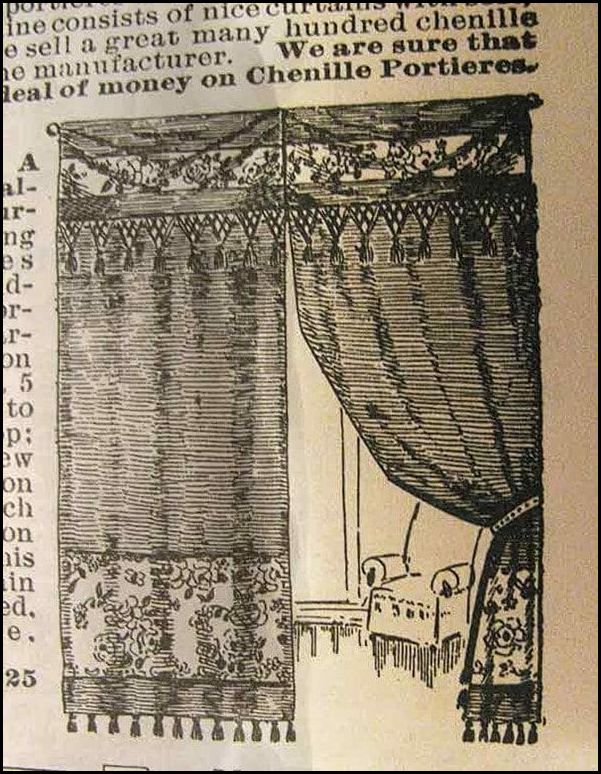
At all seasons satin damasks have favorite consideration, either those with or without borders. Then the satin jutes with gilt figures hold supreme place with many people. Hut chenille, either of silk or worsted, is the most popular, and serves admirably for hangings. There are inexpensive French tapestries with figures of shepherdesses and quaint little girls and boys, which are poems in themselves and of every color imaginable. All can be purchased at not exceeding one dollar a yard. Then there are materials by the yard of soft tints whose combinations are charming in coloring, which are excellent as draperies, and when hung are most satisfactory.
In the small apartments—the beehives of a big city—doors should be dispensed with altogether. They monopolize the space and are intruders in most houses, unless for retiring rooms, where they are absolutely necessary.
The dressing of windows is a great factor nowadays in furnishing, and methods are endless. If the window is a broad one, it can have a shade, an inside curtain of lace, and yet an outside lace curtain and heavy draperies on poles. With well-selected colors in hangings the window is complete. If there are two windows close enough together, they may be treated as one, with a broad molding of woodwork between. The curtains should be unusually full and wide, and poled in good style. On the molding there is a fine chance for decoration. Place there a bracket of good form, and on it a vase of rich tone. Both will set off the window and present a fine foci to that part of the room.
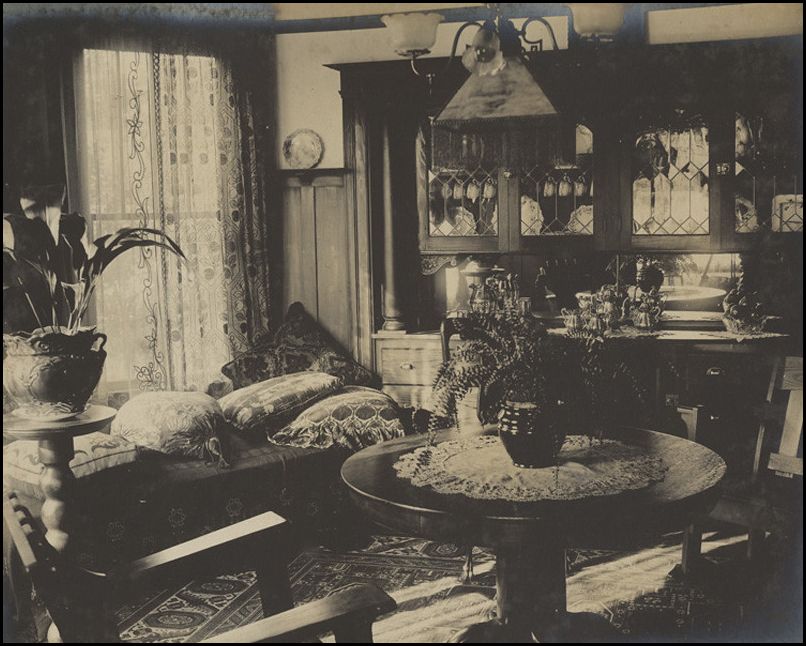
The ultra-fashionable woman dresses her windows with expensive lace which falls from the panes in straight lines. This is a thought in window dressing because it shows to advantage the pattern of the lace, yet fails in those graceful folds where curtains are expected to do duty as charming effects. The Swiss muslins are now greatly used. They have large dots and small, half moons and square designs, and when ruffled are wonderfully inviting and fresh looking. The muslin is of good width, can be hung by gilt rods and those convenient little brass rests which are now so greatly in vogue.
Next in turn comes the mantelshelf, which, as we all know, is the central object of a room. It should be decorated with a unity to suit the prevailing colors. The marble mantel of old-fashioned times is now regarded with horror, and it is generally covered with a long drapery that will screen its cold appearance, however great the carving. The wooden mantel is the acknowledged fashion of the day. It can be made with or without shelves. Those without shelves are generally elaborate in brass and tiles where the fireplace is concerned. But the popular bric-a-brac mantel has a glass at side and top it has shelves. The main shelf can be draped by the usual silk scarf, and the shelves can be decorated as taste dictates. The pernicious habit of loading down a mantel with all sorts of trumpery should be censured.
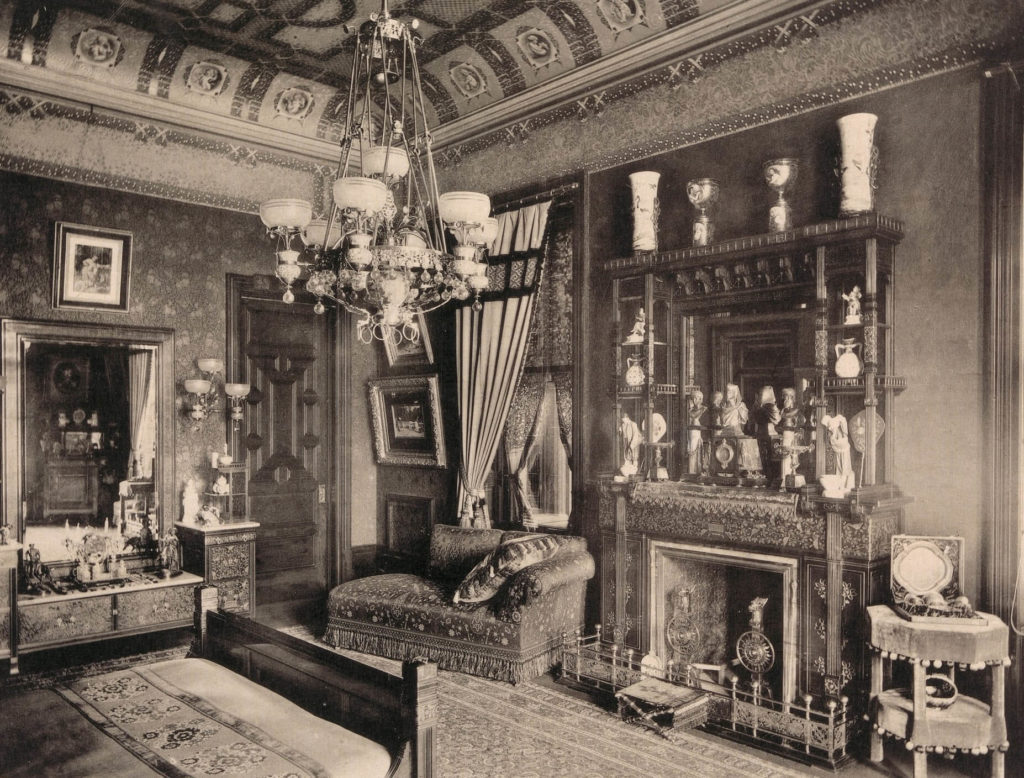
A few choice pieces, whose coloring stands out, is a good point in mantel furnishing. Keramics are exclusively for decoration, and generally have an excellent effect. But too much bric-a-brac savors of the museum, and care should be taken not to overdo.
The silk scarfs of to-day are models of beauty, while the Canton crape draperies are marvelous in pattern and design, and, like the Canton crape shawls, can be handed down as a legacy. When soiled, renovation is always possible, and this drapery, in one way or another, will do duty for many years. When the mantel does not need decoration except by a vase or two, or a picture whose painting tells a story, a charm in brass, as a plaque, or sconce, a piece of bronze, will add greatly to its furnishing. In fact, the laws of decoration are so adaptable and artistic, dealing so versatile that to be out of the commonplace is the sole essential required for people who value good form.
Much has been said about the divided room and the divided hall. If a drawing room is long and narrow, the fretwork with its curtains gives a capital modification of this awkwardness in size which is so unfavorable to harmonious effect. This fretwork is of a variety of patterns, and can be selected in ash, cherry, or walnut. It should be hung directly in the middle, and when finished, two cozy rooms are the reward. Of course the curtains should be of that scheme best suited to the furniture.
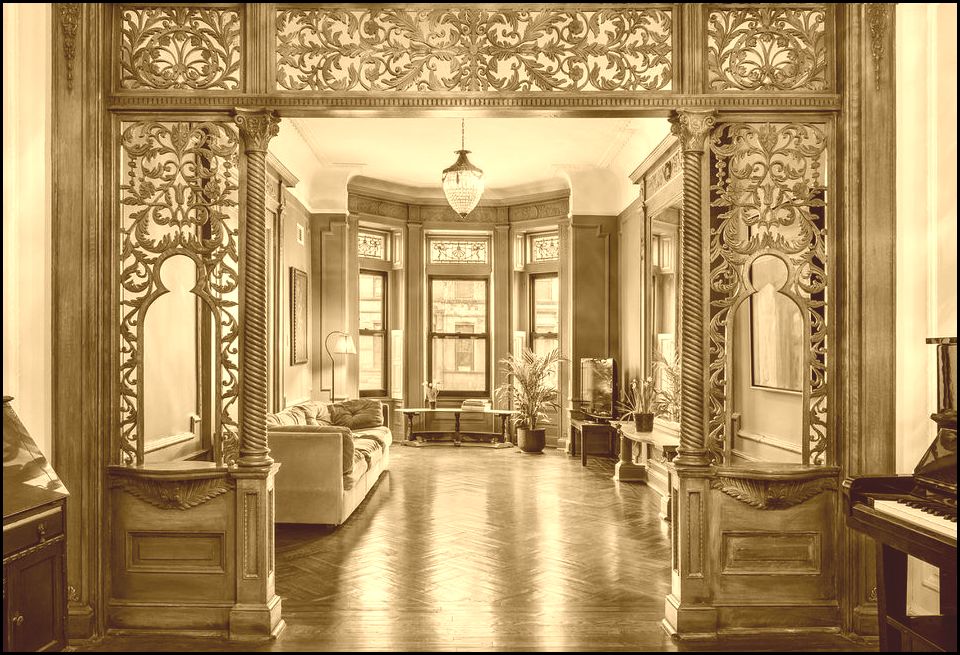
This same device will hold with good effect in hails, and “the divided hall” is gaining popularity every season. The poles are adjusted by sockets. The curtains should be of good width, good color, and should clear the floor. In halls having a marble flooring, this division is admirable. To those cold and lifeless atmospheres, the warm-toned curtain gives an aspect of comfort and warmth. Few people fully understand the true principles in furnishing, and halls in a general way in every country seem to be left out altogether, so far as decorative effect is concerned; though exception must be made in case of the country house, whose wide entrance very often forms in deed its principal charm, and becomes in the early evening the family sitting room.
Among the useful objects, the necessary pieces of furniture which have become as essential as the tables and chairs of the household, the screen of to-day is a wonderful adjunct. Their form and size is about the same, through all the varieties that are put on the market, except in those that, for fashion’s sake, are fantastic in shape. And then, what a need they fill!
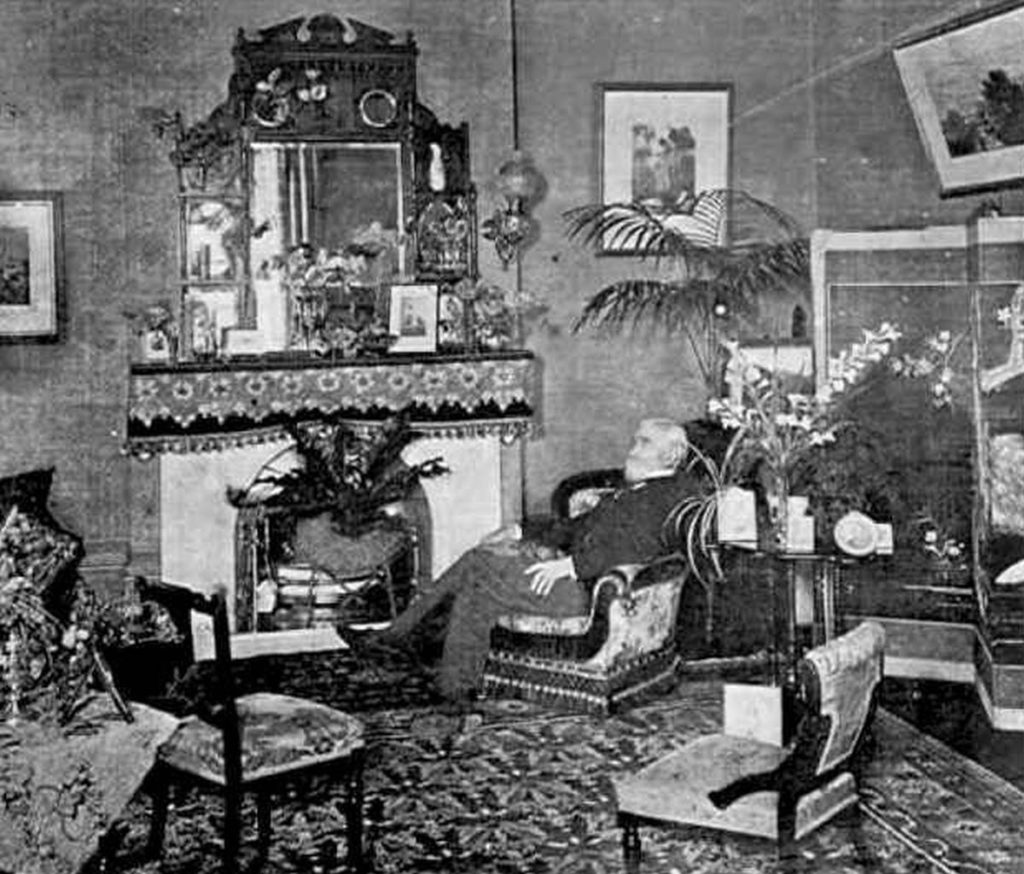
If the dining room is near the kitchen, the screen plays the part of a go-between, and does faithful duty. On a cold night, when at all costs ventilation is necessary, it is the screen which comes between the inmates and the cold air from outside, giving shelter from the wintry blasts. In the apartment, they serve to hide the radiator, that iron warming place which, although gilded, looms hideous in halls and rooms. If a screen is put before it, the warm air still flows upward, and seems to emanate from the pretty flowers and brilliant birds adorning the charming panels. For the cozy corner, how delightful! It shuts out the world and invites to pleasant slumber. It gently stands between us and those unkind visions which trouble the eyes. When the fire is too strong, and its cheerful glow reddens and flushes our faces, the screen is the ready helper in time of need. It is the invalid’s best friend and forms, as it were, a wall between her and the eddies of air that seem to beat upon her face. On the broad piazza, it is the hide and seek; and by the aid of its three divisions one can enjoy the sunshine and air unseen.
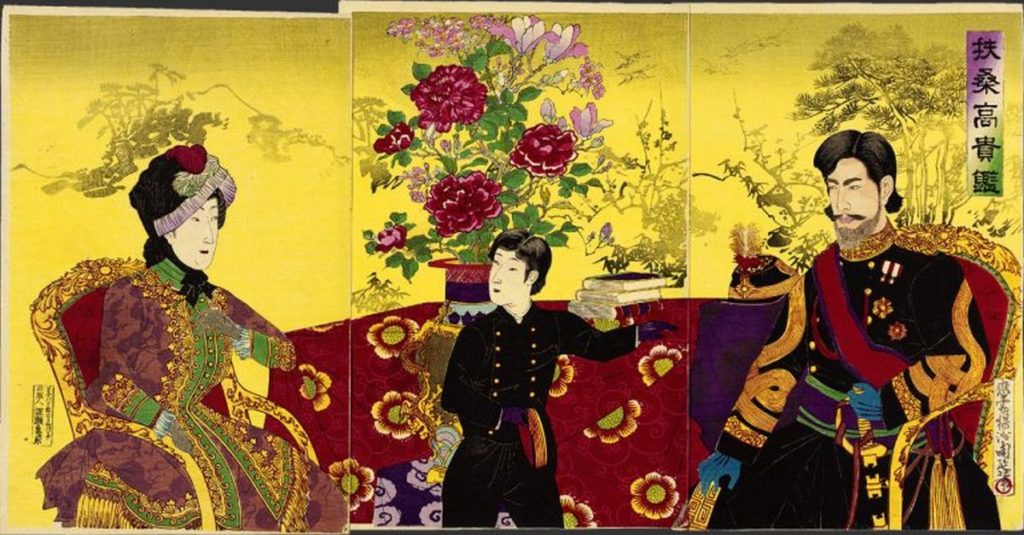
Home decoration is as necessary to our well being as the clothes we wear. In this advancement of civilization, we have come to require well-furnished rooms, and we gain by these schemes of color, these textures of brilliancy, courage to pursue our vocations under pleasant surroundings. But to all decoration lovers a word of advice may be given. Look well to the tones and tints. Therefore let the hangings be of melting colors; for the bright hues of the past have graduated into the old blues, the soft and tender terra cotta, the charming browns, and the creamy yellows. The people of the East teach us at all times the great lessons in colorings, and blend in apparent confusion the whole range of those tints which are so full of marvelous beauty, and by these examples our homes can be tastefully decorated.
If there are corners and nooks curtained and poled, there are transoms which charm our eye, windows which by their beauty we delight in, mantels whose shelves hold our best treasures, pictures whose stories tell us of limpid waters and flowering shrubs, trees whose tender branches speak to us of nature’s blessing,—then home decoration is not lost, for it becomes a beauty which we keep in our hearts and reflect in our lives.
—Mrs. Oliver Bell Bunce
———————————————————————————————————————–
 Brownstone Detectives is an historic property research agency. Our mission is to document and save the histories of our clients’ homes. From our research, we produce our celebrated House History Books and House History Reports. Contact us today to begin discovering the history of your home.
Brownstone Detectives is an historic property research agency. Our mission is to document and save the histories of our clients’ homes. From our research, we produce our celebrated House History Books and House History Reports. Contact us today to begin discovering the history of your home.